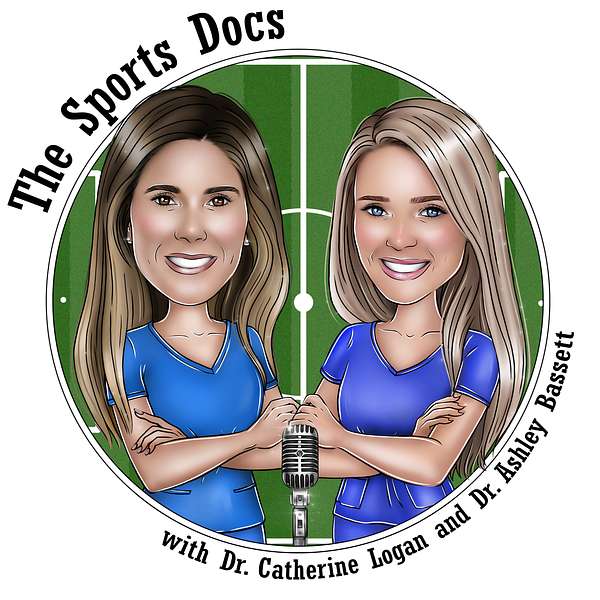
The Sports Docs Podcast
Sports medicine is a constantly evolving field, with hundreds of new articles published each month on the topic. This ever-growing wealth of information can make it challenging to stay updated on the newest approaches and techniques, and to know which data should actually change your practice. Join orthopedic surgeons, Dr. Catherine Logan and Dr. Ashley Bassett, as they chat about the most recent developments in sports medicine and dissect through all the noise.
On each episode of The Sports Docs podcast, the hosts will tackle a specific injury – from ACL tears to shoulder instability – and review the top research from various high-impact journals that month, including The American Journal of Sports Medicine, Arthroscopy: The Journal of Arthroscopic and Related Surgery, Sports Health, Journal of Shoulder and Elbow Surgeons, and more. The Sports Docs will also be joined by experts in the field of sports medicine – orthopedic surgeons, nonoperative sports medicine specialists, athletes, physical therapists, athletic trainers and others – to provide a fresh and well-rounded perspective based on their unique experiences.
The Sports Docs – Dr. Logan & Dr. Bassett – are friends & former co-residents from the Harvard Combined Orthopaedic Residency Program, who went onto esteemed sports medicine fellowships at The Steadman Clinic and The Rothman Institute, respectively. Dr. Logan practices in Denver, CO, and serves as Team Physician for Men's USA Lacrosse & as a Team Physician for U.S. Ski & Snowboard. Dr. Bassett is the director of the Women’s Sports Medicine Center at the Orthopedic Institute of New Jersey and practices across northern NJ, primarily in Morris and Sussex Counties.
Together, they will bring monthly conversations on how to care for athletes of all ages and levels of play, with a healthy mix of cutting-edge science and real-world application.
The Sports Docs Podcast
14. Dr. Jo Hannafin: Building Teams in Medicine - Part I
On today’s episode we’re focusing on building teams in medicine. We’re joined today by Dr. Jo Hannafin who has an unparalleled depth and breadth in building teams through her work as a surgeon, a physician-scientist, a team physician for US Rowing and as a leader in the world of orthopaedic surgery.
Dr. Hannafin is board certified in orthopedic surgery and sports medicine and is the founder of the Women's Sports Medicine Center at HSS. Notably, she was the first female president of the American Orthopaedic Society for Sports Medicine and is also a past president of the Herodicus Society. In addition, she has served as vice president and secretary of the AOSSM board, chair of its committees on Enduring Education and Research, and as a member of numerous other AOSSM committees.
We have some great articles for you today that contribute well to our conversation on how to build high functioning teams in the field of sports medicine.. The first article hails from the Harvard Business Review and is titled, The Kinds of Teams Health Care Needs by Amy Edmondson. Ms Edmondson, a professor of Leadership and Management at HBS, opens this article by highlighting the challenges of working across teams in medicine, and breaking out of our silos. She discusses the tendency in medicine to value individual training, knowledge, and action; however, leaders must create structures that make teaming easier. Professor Edmondson provides examples on how leaders can reframe to promote cross-disciplinary collaboration.
Our second article is from MIT Sloan Management Review, entitled Establishing High-Performance Teams: Lessons from Health Care. The authors pondered the question: why is it that teams following the same best practices can achieve different results? They studied “new team formation” to understand why some teams succeed while others struggle. In their study of a dozen primary care clinics trying to establish multi-disciplinary health care teams, they identified 3 prototypical approaches to establishing team-based care:
- Pursuing functional change only
- Pursuing cultural change only
- Pursuing both functional and cultural change processes
In looking at these prototypes, they then subdivided them into Low and High Performers; the highest-performing teams focused simultaneously on functional and cultural change.